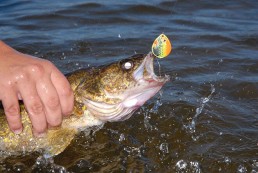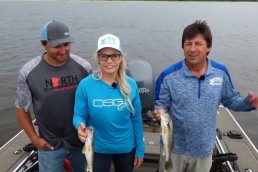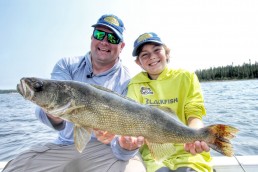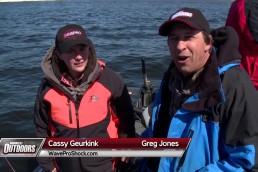Bottom Bouncers as Easy as 1-2-3 for Canadian Shield Walleyes
SHARE THIS POST
Most walleye anglers don’t think of bouncers as precisions tools, but they can be. They’re designed for crawling and down slopes in windswept prairie waters where you need to quickly cover water to locate fish while maintaining some semblance of boat control in fierce winds. Yet with light to calm winds, they can also be used for precise presentations in deeper water. And not just on impoundments.
On Canadian Shield lakes throughout Canada and northern Minnesota, abundant rocks eat jigs and traditional sinkers when lowered into crags between boulders. Bouncer design, however, allows them to skip over gaps between boulders. When trolled or drifted, the wire leg touches bottom and prevents body of sinker from penetrating down into snags. They are surprisingly snag-resistant in rocky waters of the Canadian Shield.
They’re also more versatile than you may realize.
The angle of the dangle
Here are some simple and effective ways to use bottom bouncers on Canadian Shield waters. Basically, it boils down to the rule of 1-2-3—ounces.
Shallow spinner rigs—for horizontal drifting/trolling at faster speeds (1 to 2 mph)
Bouncers and spinner rigs are great combos to quickly cover depths of about 12 feet and less. Use 1 to 1 1/2-ounce bouncers to lightly skip across rocks and crags, trailing a size 2 to 4 spinner harness behind. The sinker scoots and dashes across pitfalls with only the tip of the wire leg momentarily scratching the surface. Troll (or drift them in heavy waves) on a long line, typically at less than a 30-degree angle below the surface.
Spinners are traditionally fished with live bait like nightcrawlers hooked on a two-hook spinner harness. While we say, “live bait,” artificial substitutes also work well, particularly with spinner rigs pulled at enough speed to rotate the blade. This creates flash and pulsation, and transmits a lifelike motion to a worm body, be it a live nightcrawler or a softbait imitation.
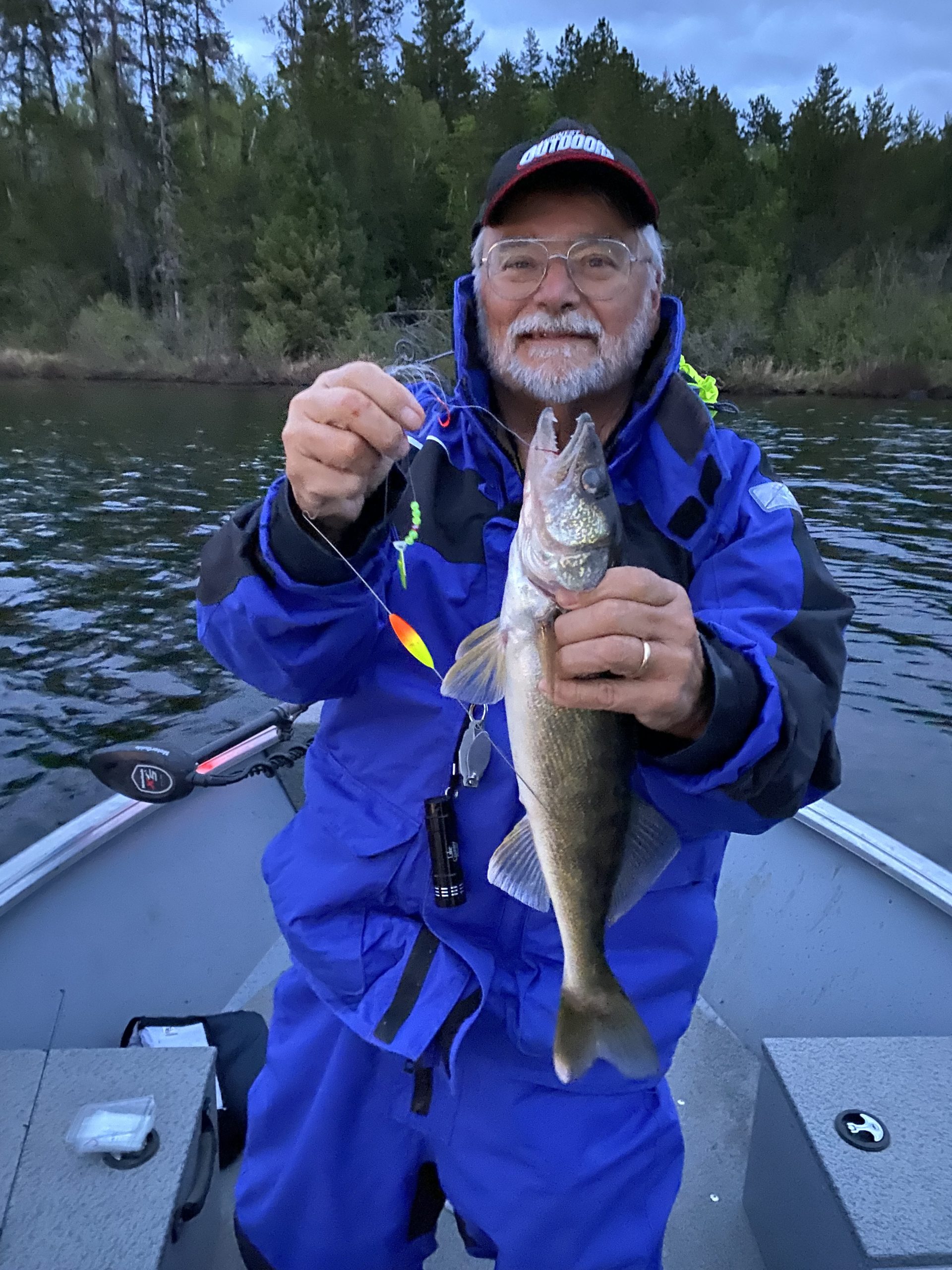
Mid-depth spinner rigs or livebait rigs—for a combination of horizontal and vertical presentation at modest speeds (3/4 to 1 1/4 mph)
This is for use in the transition zone (12 to 25 feet) where both spinner rigs and live bait rigs work well. It’s a great way to fish the top and bottom edges of mid-lake reefs and long shoreline points. Mostly, it’s a matter of achieving preferred speed and coverage (spinners) versus slower precision and finesse (live bait rigs).
Are you enjoying this post?
You can be among the first to get the latest info on where to go, what to use and how to use it!
Troll or drift 1 1/2- to 2-ounce bouncers fast enough to rotate or at least flop and wobble the spinner blade. Fish your lines at the traditional 45-degree angle below the surface, making occasional bottom contact with the wire leg of the bouncer. Live bait like a leech, ‘crawler or minnow, or an artificial softbait like a nightcrawler imitation, are ideal for this approach.
The deeper you go, the more challenging it becomes to maintain a trolling or drifting speed sufficient to rotate a spinner blade. This is where Smile Blades come into play, which display a low-frequency spin-flop at slower speeds in deeper water.
You could try placing rods in rod holders, but the risk of snagging in boulders kind of defeats the purpose, unlike fishing a clean-bottomed reservoir where snags are infrequent. Handholding rods allows instant response to impending snags by lifting the rod tip (and sinker out of harm’s way). Besides, there are many places in Canada, and throughout most of Minnesota, where you can only use one rod at a time, which defeats the purpose of placing multiple rods in holders. And handheld rods better transmit subtle bites.
Deep livebait rigs—for fishing near-vertical at slow speeds of 1 mph and less.
At depths of 30-feet-plus, bottom bouncing is all about precision and finesse with a near-vertical presentation at slow speeds. You might even call it “bottom touching or tapping,” rather than bouncing.
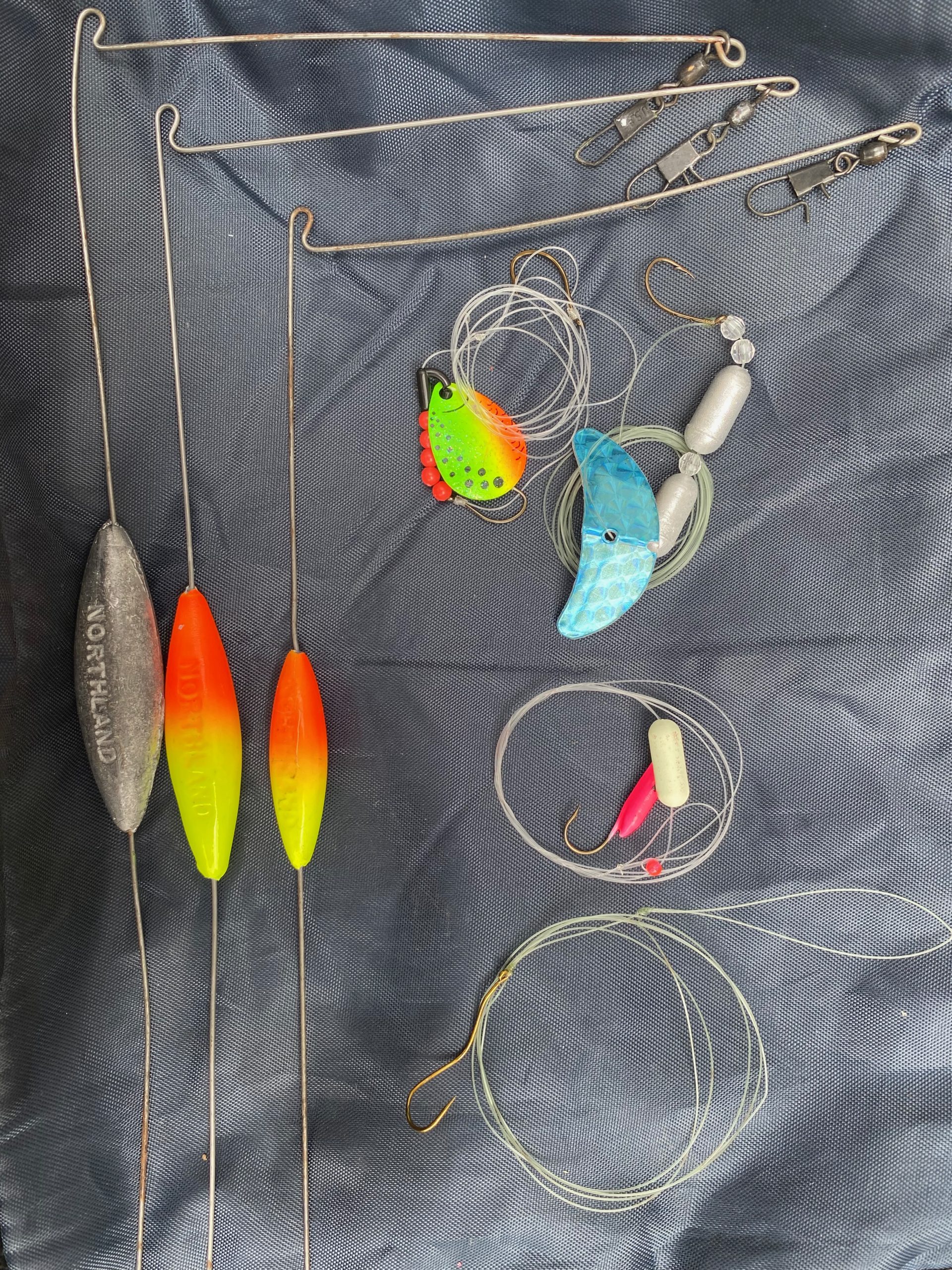
Heavy, 3-ounce bouncers are en vogue for these depths. Basically, lower your bouncer and livebait snell near vertically to bottom, then immediately lift up a couple of inches. Slowly drift or use your electric motor to inch along, slightly dropping your rod tip every few seconds to briefly touch the wire leg of the bouncer to the bottom, then immediately lifting again. The idea is to avoid lowering the sinker into crags and snags, although when you’re following the base of a reef along the adjacent soft basin, snags should be much reduced.
When you get a bite—especially a subtle bite—just sort of lean your rod tip toward the fish for a second or two, then sweep-set the rod forward and upward.
I suppose that you could use a slip bouncer for this presentation, but that requires feeding line out on a bite, which would allow the bouncer to topple over, potentially snagging. Sticking with a traditional bouncer is best.
Fish live bait snells near-vertically down to 40 feet and deeper, such as just above the mid- to late-summer thermocline.
Ideally, a plain-hook-snell baited with a leech is excellent for this approach. So is a “slow death” hook with a half ‘crawler threaded onto the kinked hook. Moving slowly causes the hook to occasionally rotate the kinked half ‘crawler, creating a similar though subtler attraction to that provided by a spinner blade, at far slower speed. A Smile Blade/‘crawler or floating jighead/‘crawler combo is also effective for this approach.
MWO
SHARE THIS POST
Did you enjoy this post?
You can be among the first to get the latest info on where to go, what to use and how to use it!
Dave Csanda
Dave Csanda has enjoyed 40 years in the fishing communications industry at In-Fisherman, Angling Edge and now, as editor of MidWest Outdoors. He is an inductee of both the Minnesota and National Fresh Water Fishing Halls of Fame.
